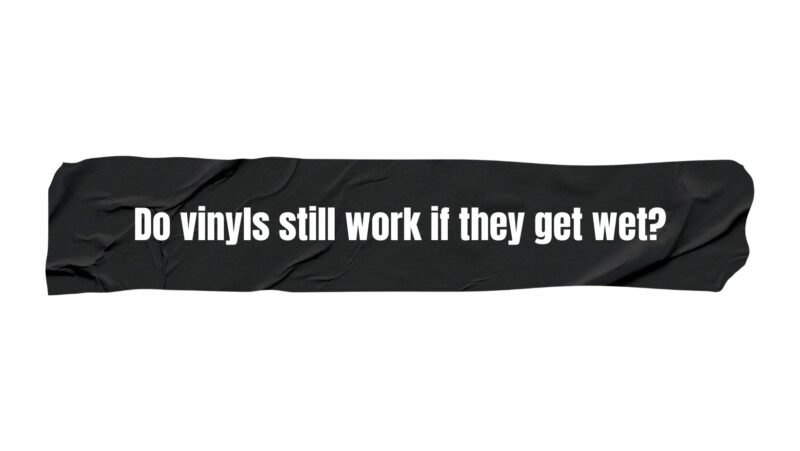Vinyl records, with their timeless appeal and captivating sound, have stood the test of time as cherished artifacts of music history. The act of playing a vinyl record on a turntable is a journey that connects generations, transcending the digital age. However, the fragility of vinyl records has sparked curiosity about their resilience to unexpected elements. One question that arises is: Do vinyl records still work if they get wet? This article ventures into the realm of water-drenched vinyl records, investigating the effects of water exposure on their playability, the factors at play, and strategies for restoration.
Unraveling the Mystery: Water and Vinyl Records: Vinyl records, composed of polyvinyl chloride (PVC), are sensitive to environmental changes, including temperature, humidity, and, indeed, water exposure. While vinyl records are designed to withstand regular handling and playback, the intrusion of water presents a unique challenge that can affect their structural integrity and sonic performance.
Water’s Impact on Playability: The consequences of exposing vinyl records to water extend beyond mere aesthetics. When a vinyl record gets wet, it can lead to a range of potential outcomes that impact its playability and sound quality. Understanding these effects is vital for collectors, enthusiasts, and anyone seeking to preserve the charm of vinyl records.
Warping: A Notable Consequence: One of the most evident outcomes of water exposure is warping. Vinyl records are sensitive to temperature and humidity changes, and when water penetrates the grooves and is unevenly absorbed, the record can warp and take on a distorted shape. Warped records are challenging to play, as the stylus struggles to navigate the uneven surface, leading to playback issues and diminished sound quality.
Mold Growth: A Hidden Threat: Water exposure creates the ideal environment for mold growth, a hidden peril that can silently compromise the integrity of vinyl records. Mold thrives in damp and humid conditions, and when water infiltrates the grooves, it provides a breeding ground for mold to flourish. This growth can lead to discoloration, odor, and even permanent structural damage.
Deformation of Grooves: The grooves on a vinyl record are the pathways through which music flows, and their delicate structure is essential for accurate sound reproduction. When water comes into contact with these grooves, it disrupts their precision and alignment. This disruption translates into surface noise, skipping, and compromised audio quality.
Factors Influencing Restoration: Several factors come into play when determining whether wet vinyl records can be restored to their former glory:
- Extent of Exposure: The duration and intensity of water exposure influence the extent of damage. Swift action is crucial to prevent irreversible harm.
- Type of Water: The nature of the water (clean or contaminated) and the presence of impurities can impact the severity of damage.
- Record Material: Different types of vinyl records (standard, colored, picture discs) react differently to water exposure due to variations in materials.
- Record Condition: The condition of the record prior to exposure, including existing scratches and wear, can affect the outcome.
- Restoration Methods: The techniques used for restoration, such as drying methods and cleaning solutions, influence the success of salvaging the record.
Restoration and Preservation: While water exposure poses a significant threat to vinyl records, there are steps that can be taken to mitigate damage and, in some cases, restore the record’s playability:
- Immediate Action: Remove the record from water promptly to prevent further absorption.
- Blotting and Drying: Gently blot the wet surface using an absorbent cloth, and allow the record to air-dry in a horizontal position.
- Professional Assessment: For valuable records or those with extensive damage, seek professional restoration services to increase the chances of successful recovery.
- Preventative Measures: Store vinyl records in a controlled environment away from potential water sources to reduce the risk of exposure.
Conclusion: The question of whether vinyl records still work if they get wet delves into the delicate balance between preserving musical nostalgia and the unexpected challenges posed by water exposure. While water can warp, distort, and damage vinyl records, timely action, informed restoration efforts, and careful handling can salvage these musical treasures. By understanding the potential effects of water and practicing proactive preservation, collectors and enthusiasts can ensure that the melodies locked within vinyl records continue to resonate for generations to come, even in the face of unexpected water encounters.


